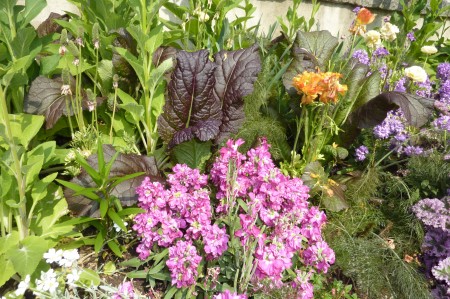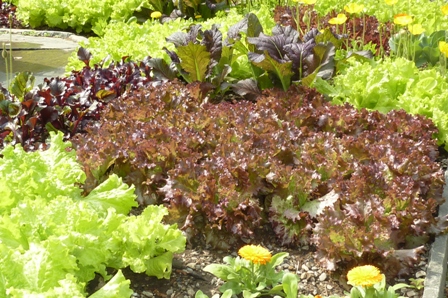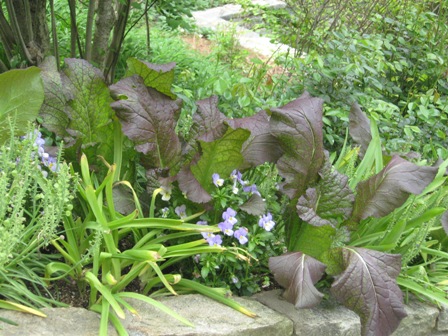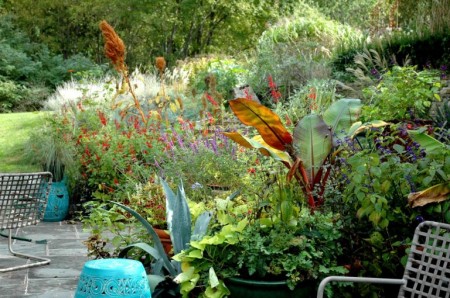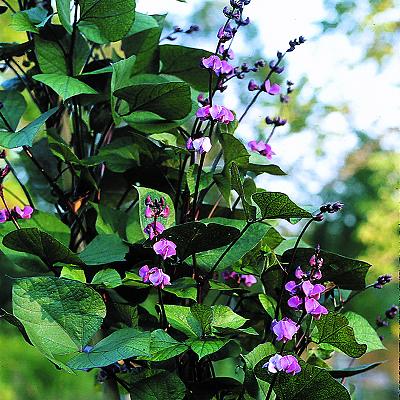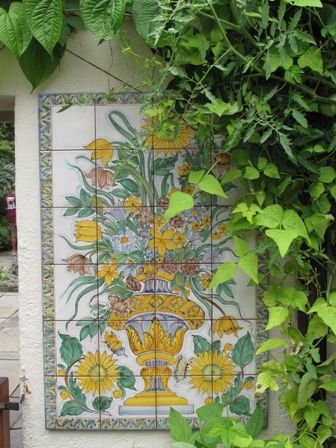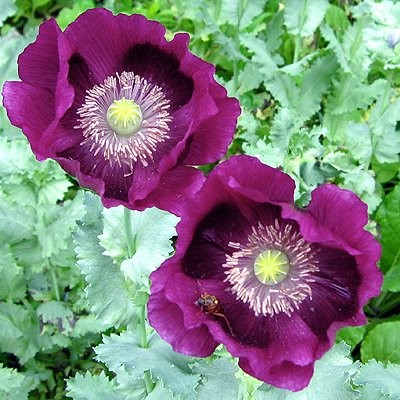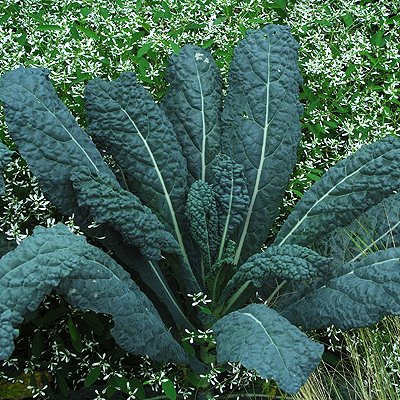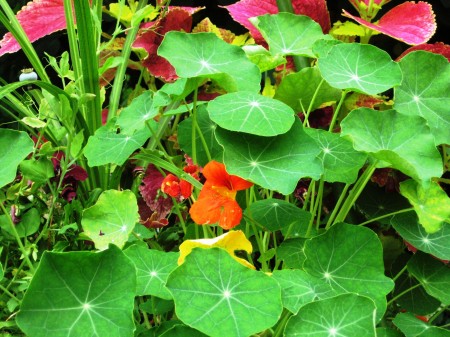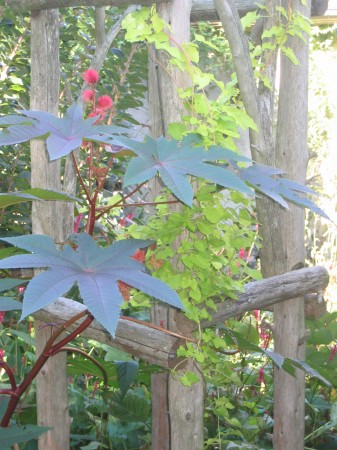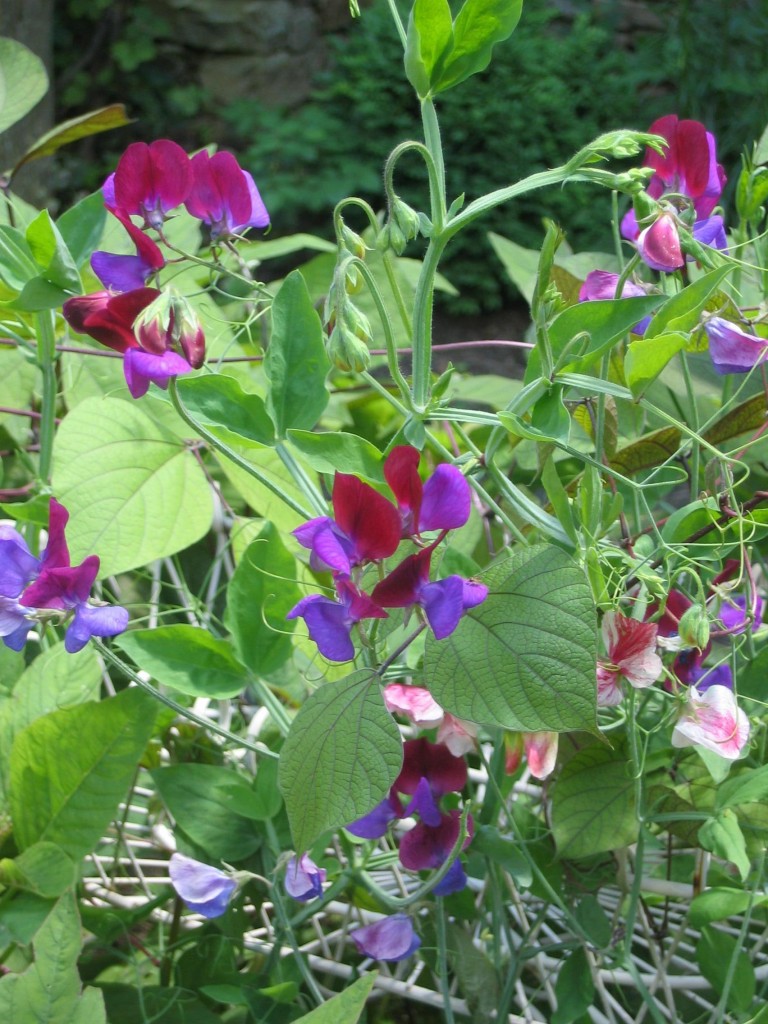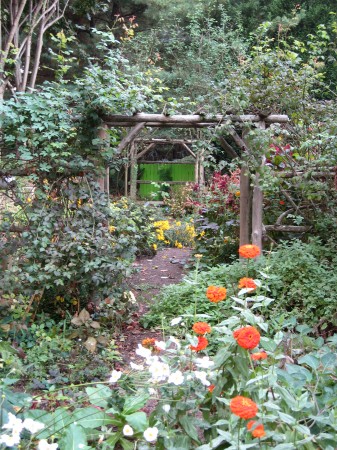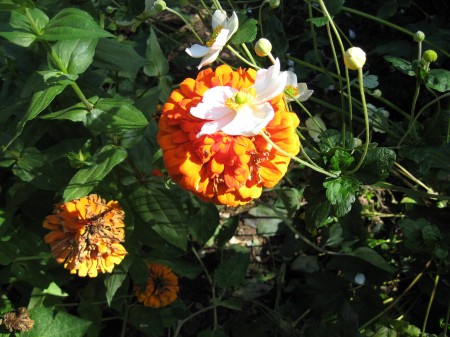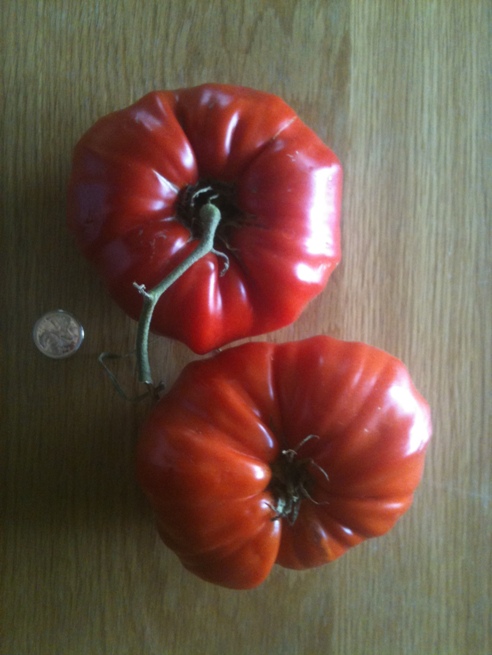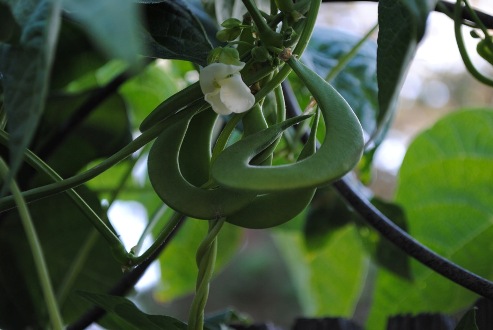I’m a seed-aholic. No matter how hard I try to control myself, each winter I can’t resist experimenting with new introductions. Oh yes, and I must have another variety of amaranths, nicotianas…or whatever. I convince myself that it’s inexpensive ~ after all, another $2.75 spent on what will surely be dozens of beautiful flowers …and as a steward of my piece of land, it’s important for me to do.
What started as a post on my selection of 15 top seeds for 2013 has grown into a list of the Top 42 Seeds for 2013 from some of my favorite gardeners and seed companies .
MY PICKS
Red Giant Mustard –Dan Benarcik at Chanticleer turned me on to what has become one of my all time favorites.
Amaranth- I use it because of its ‘in your face’ quality and velvet plumes. Prolific self seeder.
Bull’s Blood Beet – When I saw it several years ago at Nan Ondra’s garden, I knew that I had to have it. I use it as an ornamental – with its low growing burgundy leaves, it’s perfect for the front of the border or in containers or window boxes. Oh and did I mention that it actually produces beets?
Hyacinth Bean ‘Ruby Moon’ – (Dolichos lablab) – The first year I tried it growing up my entry way arbor in the backyard, I was shocked by its rampant growth ~ and fell madly in love with its purple seed pods. From Select Seeds.
Pole Beans Goldmarie and the runner bean, Pole Beans Golden Sunshine – Thanks to Jonathon Wright’s rambunctious vegetable window boxes perched on an upper entry way ledge at Chanticleer, I was turned on to Goldmarie and Golden Sunshine. Jonathon’s were festooned to perfection (beautiful is an understatement). I have used them for the past 2 years draping down my window boxes onto an outer wall – and love ‘em.
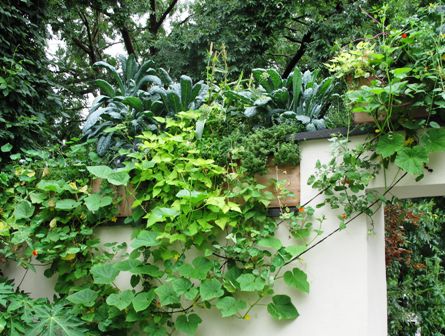
Pole Beans Goldmarie and Golden Sunshine , Kale ‘Nero de Tascano’ at Chanticleer. Photo Courtesy of Fran Sorin
4. Poppy ‘Lauren’s Grape’ –I’m a sucker for poppies. When I saw it several years ago at a garden in Somerset, England, its purple violet color took my breath away. It wasn’t easy to locate seed in the United States ~ I finally found it at Select Seeds.
Kale ‘Nero de Toscana’ Organic – Its dark green leaves alone make it worth growing. I’ve used it in spring containers with blue hyacinths and daffodils and pansies and in window boxes with practically anything . They survive high winds, heavy rain and cold weather . In other words, this is a plant not to be missed. At Select Seeds.
Nasturtium – I would grow it just for its outstanding leaves. But each season when I see the bright orange, red, butterscotch yellow, and deep velvet red flowers, I’m reminded how much they bring to a container, window box, or trellis.
Rhubarb Chard – I’ve never failed with chard. Although I have favorites, I like to try new varieties. Although my opened seed packet from this past season is Rhubarb Chard from Seeds of Change, I’m not sure that the chard in the photo below is Rhubarb. Any thoughts?
Ricinus – Although it’s a poisonous seed, I have grown it for years in my garden. I have never found another plant to replace it. How about you?
Sweet Peas – I don’t think I’ll ever have enough sweet peas. They are beyond intoxicating. I have tried more varieties that I can remember. One open packet I have from last season is Sweet Pea’Cupani’s Original’ from Select Seeds.
A true story. I had made contact with Nigel Nicholson to visit with him on my next trip to Sissinghurst. For those of you who may not know, his parents, Sir Harold Nicholson and Vita Sackville West, were the creators of Sissinghurst – one of the most famous gardens in the world.
I knocked on the door of the cottage where he lived (on the grounds of the garden). The first thing that I noticed -besides Nigel- when I entered was vases of sweet peas throughout the living room. If my memory serves me correctly (it was several years ago), he told me that he had brought them in from the garden that morning. Something about the way he said it touched my heart ~
Zinnias- I used to limit them to my cutting garden. But when I noticed a few bare patches in a bed in late spring, I started sowing some in my front bed and never stopped.
HELEN YOEST of Gardening With Confidence.
For my wildlife habitat, Helen’s Haven, I grow lot’s of Zinnias. In my experience, Zinnias are one of the best flowers to provide nectar for butterflies. Starting after frost, I’ll direct sow every two weeks for a continuous renewal of this good looking plant. This year, I’m trying Renee’s Butterfly Zinnias and Cutting Zinnias.
In the vegetable garden I’ve dubbed, Le Petite Potager, I grow lots of staples, but also colorful oddities to get the attention of my kids. DollarSeed has mix of seeds they call Kaleidoscope of Carrots–-Atomic Red, Bambino Orange, Cosmic Purple Lunar White, and Solar Yellow, that are sure to interest them.
As a child, my next door neighbor grew Four O’clocks–this and a few roses, but not much else. I thought they were the most exotic flower in the world. Fifty years later, those flowers opening in the afternoon still haunt me, so this will be the year I grow them in my garden. Sometimes, it just takes me a while to get around to doing stuff. ;~\ I’ve ordered Marbles Mixed #FL448 (Mirabilis jalapa). Yellows, reds, oranges, and whites, in the “Marbles” series with lots of stripes and slash. Baker Creek Heirlom Seeds.
My wildlife habitat is water-wise. Even with 44 inches a year, Raleigh benefits from this sustainable design style because those inches aren’t evenly distributed during the year. In my rock garden, I grow Allium Nodding Onion seeds, from Botanical Interests as an edible, native, water-wise plant that gives me a beautiful flower in the color of lavender-pink.
DOUG GREEN of Doug Green’s Garden
We’re big fans of Pumpkin ‘Brode Galeux D’Eysines’ (there’s an ague accent on Brode) It is the ugliest darn thing – all warty but it’s very, very solid inside with superb sweet flesh. It makes the best pumpkin pickles I’ve ever tasted!
Beatina. This is a perennial spinach hardy in USDA 7 – maybe into 6. We overwinter it in pots in the cold cellar and grow it out again for seed collecting. Very large, thick but tender leaves that can be used raw or cooked and one of the sweetest greens you’re ever going to taste. Eagle Ridge Seeds. It may be difficult to find in the US but Mayo distributed seeds to commercial grower/propagators so it’s in the pipeline.
Tomato. ‘Mayo’s Delight’ a grower named it after Mayo and it’s a large, firm tomato with excellent cool weather growing characteristics. We were very surprised this year how good it was in the heat. One of the best tasting fruits this summer. That’s a quarter in the picture.
Sources – the usual suspects in heirloom vegetables. Terroir Seeds (now owns Underwood Gardens as well), Fedco, Southern Exposure Seeds, Bakers and the Seed Savers.
REBECCA SWEET of Gossip In The Garden
Summers in my garden wouldn’t be complete without growing my two favorite beans from Renee’s Garden. The first is Spanish Musica (flat, long , crunchy and the juiciest bean I’ve ever tasted) which sometimes grows into these sweet little curlicue shapes.
The second is the Rattlesnake heirloom pole bean with its stunning maroon stripe – guaranteed to lure any kid into the garden!
I love mixing edibles and ornamentals together in a garden bed, and the heirloom variety Bull’s Blood Beets are one of my favorites from Peaceful Valley. The garnet colored foliage adds such pizzaz to the garden (not to mention delicious tasting beets)!
After visiting Native Seeds in Arizona this year (a non-profit organization promoting seed conservation) I’m very excited to try my hand at growing Amaranth Mountain Pima Greens. Not only is the flower guaranteed to stop folks in their tracks but the calcium-rich leaves are edible, too. At Native Seeds.
I’ve always wanted to grow the stunning Cup and Saucer Vine (Cobaea scandens), with its conversation-starting purply-blue and white flowers, and finally have the perfect opportunity! I have a very old grapevine that died last year and plant to use its structural trunk and branches as a support for this fast growing vine. At Botanical Interests.
Select Seeds Picks
Amaranth Chinese Giant
Scabiosa Summer Fruits
Painted Tongue Gloomy Rival
Dahlia Sunny Reggae
Painted Tongue Gloomy Rival
Marigold Kees Orange
Feverfew Giant Tetra White
Baker Creek Seeds Picks
Mizuna Lime Streaks (greens)
Mizune Red Streaks (greens)
Australian Yellow (lettuce) http://rareseeds.com/vegetables-d-o/lettuce/australian-yellow.html
Strawberry Crown (winter squash)
Dester (tomato)
Jubilee Bush (watermelon)
NOW IT’S YOUR TURN. If you have a list of Top Seeds For 2013, write about them on your blog with a link back to this post on Gardening Gone Wild. Place your link in the comment section below so that all of us can link back to your blog and see what you’ve picked.
AND SOME EXCITING NEWS! Our friend Susan Morrison, who blogs at Blue Planet Garden Blog has created a gardening app. I thought it was so cool that I wanted to share it with you.
 Foolproof Plants for Small Gardens (Sutro Media 2013) is a new garden app that highlights some of the best options for ornamental plants that stay a manageable size. It includes over 90 plants, 450 photos and a highly searchable database that allows you to search by plant category, USDA zone, or desirable characteristics like flower color or drought tolerance. $2.99, available from iTunes for iPhone and iPad, and from Google Play for Android Smartphones.
Foolproof Plants for Small Gardens (Sutro Media 2013) is a new garden app that highlights some of the best options for ornamental plants that stay a manageable size. It includes over 90 plants, 450 photos and a highly searchable database that allows you to search by plant category, USDA zone, or desirable characteristics like flower color or drought tolerance. $2.99, available from iTunes for iPhone and iPad, and from Google Play for Android Smartphones.

